
Concept explainers
Name each compound and state how many lines are observed in its
a. 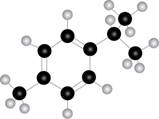 b.
b. 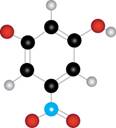
(a)
Interpretation: The name of the given compound is to be determined. The number of lines observed in its
Concept introduction:
Answer to Problem 20P
The IUPAC name of the given compound is
Explanation of Solution
The given molecule is
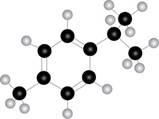
Figure 1
Black coloured atoms have four bonds. So, these are the carbon atoms. The grey coloured balls have one bond. So, these are the hydrogen atoms. The molecular structure of the compound is,
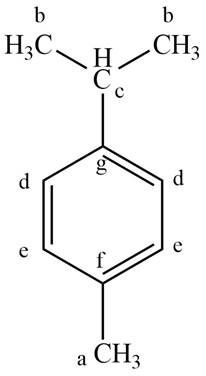
Figure 2
The parent name of the compound is benzene. The numbering will be in alphabetical order. Isopropyl group is present on first carbon atom and methyl group is present on fourth carbon atom. The IUPAC name of the given compound is
Thus, seven lines are present in
The IUPAC name of the given compound is
(b)
Interpretation: The name of the given compound is to be determined. The number of lines observed in its
Concept introduction:
Answer to Problem 20P
The IUPAC name of the given compound is
Explanation of Solution
The given molecule is

Figure 3
The red coloured balls have two bonds. So, these are the oxygen atoms. The blue coloured ball has three bonds. So, this is the nitrogen atom. The maroon coloured ball has one bond. So, this is the halogen atom. The black coloured atoms have four bonds. So, these are the carbon atoms. The grey coloured balls have one bond. So, these are the hydrogen atoms. The molecular structure of the compound is,
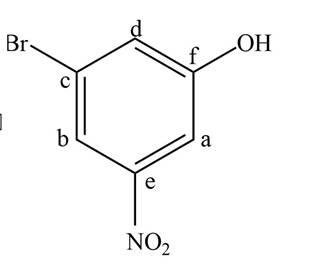
Figure 4
The parent name of the compound is phenol. The numbering will be in alphabetical order. Bromine atom is present on third carbon atom and nitro group is present on fifth carbon atom. The IUPAC name of the given compound is
Thus, six lines are present in
The IUPAC name of the given compound is
Want to see more full solutions like this?
Chapter 15 Solutions
Organic Chemistry (6th Edition)
- Name the following molecules with IUpacarrow_forwardWhat is the molecular orbital for cyclopropenyl anion and is it aromatic, antiaromatic or nonaromatic?arrow_forwardUsing the chart describe the change from cystine to tyrosine and its impact on the protein. Using the chart describe the change from histidine to aspartic acid and its impact on the protein.arrow_forward
- How to get the predicted product of this reaction belowarrow_forwardPlease help me fill out the chart then using the chart describe the change from cystine to tyrosine and its impact on the protein. Then using the chart describe the change from histidine to aspartic acid.arrow_forwardWrite the Esterification reaction mechanism for acetic acid, and one propanol to make propanol ethanoate (molecule that gives peas its odor in flavor)arrow_forward

 Organic ChemistryChemistryISBN:9781305580350Author:William H. Brown, Brent L. Iverson, Eric Anslyn, Christopher S. FootePublisher:Cengage Learning
Organic ChemistryChemistryISBN:9781305580350Author:William H. Brown, Brent L. Iverson, Eric Anslyn, Christopher S. FootePublisher:Cengage Learning EBK A SMALL SCALE APPROACH TO ORGANIC LChemistryISBN:9781305446021Author:LampmanPublisher:CENGAGE LEARNING - CONSIGNMENT
EBK A SMALL SCALE APPROACH TO ORGANIC LChemistryISBN:9781305446021Author:LampmanPublisher:CENGAGE LEARNING - CONSIGNMENT


